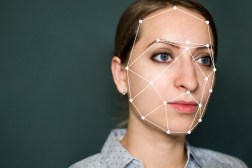Twenty percent of potential United States voters face difficulties effectively casting their ballot on election day, a new report by the Information Technology and Innovation Foundation said.
Released May 14, the report, titled “Innovation for Accessible Elections,” examines the capability for the U.S. to increase voting access through technology, education and training. In addition, the report features innovations developed through the ITIF’s Accessible Voting Technology Initiative, funded by the U.S. Election Assistance Commission.
“We’ve been doing this three-year project working with a lot of universities around the country to develop technology to do field tests and investigate solutions, and all of this culminated in this report,” Daniel Castro, one of the report authors said in a phone interview. “We wanted to highlight all the projects that came out of it.”
The commission, an independent agency established under 2002’s Help America Vote Act, provides resources for voters, and monitors and tests election processes. While honoring the advances allowed by the Help America Vote Act, the report, authored by Castro and Whitney Quesenbery, asserts that the voting systems adopted after the act passed are coming to the end of their usable life. These systems, the report said, still do not allow voting systems to be accessible enough for some voters with disabilities.
“Our research shows that elections are still not accessible for millions of voters with disabilities,” Castro said in an ITIF release announcing the report. “Through this effort, we hope to highlight technologies and best practices that can help ensure that all citizens, with or without a disability, can vote privately, securely and independently.”
The issues identified in the study are limited access to election information, insufficient poll worker training, limited access to polling locations and inefficient voting systems for disabled voters.
To help brainstorm for the report, ITIF partnered with OpenIDEO — an online collaborative design website — to sponsor an open challenge to design an “accessible election experience for everyone.”
Among the possible suggestions were a joystick and button system to allow for universal control of a voting machine, tablets with a custom case for elderly voters to vote, a simplified two-button voting system, a multiplatform mobile system and better services for long-term care facilities.
The report also advocated better training for poll workers to improve the interaction between the voter, the voting booth and the poll workers.
Concluding the report, the authors acknowledge the need for progress, recommending that election officials at multiple levels adopt better practices.
“While most elections are more accessible today than in years past, more progress is needed,” the report said. “State and local election officials should be encouraged to adopt best practices, such as online voter registration and no-excuse absentee voting, and to experiment with new programs, such as outreach to long-term care facilities, to better meet the needs of voters.”
Castro admitted the country is far away from sweeping, technological election reform. As voters become more and more Web-savvy, the desire to integrate technology into the process becomes more prevalent, he said.
“Whether it’s creating a ballot and printing and being able to verify it, or doing it and sending it electronically, there’s no reason we can’t do it,” Castro said. “There’s been pushback ever since something like this has been proposed though, so I’m not too optimistic.”
In the report itself, the authors acknowledge the lack of an immediate, easily accessible solution.
“Unfortunately, there is no simple solution,” the report said. “Creating accessible elections will require sustained research and funding to continue designing new technologies and processes, evaluating them in the field and training election officials to use them.”
However, in the short-term, there are strides that can be made at the local levels to bring elections to a more modern age. Among them, Castro suggested posting polling booth wait times online so voters do not have to spend lengthy amounts of time at the polls.
“Even if we can’t expect to change elections radically across the country, there are these local election officials who have the autonomy of their area, and they can adopt some of these processes,” Castro said. “Things like putting wait times online— some are really easy, some are much harder, but the local election officials can take these ideas and run with them.”
Though considered something of a pipe dream, Castro said voting online could be done, and it could be done with more transparency and security than the current system.
“Now you cast a ballot, you’re not actually sure that it was counted,” Castro said. “[With encrypted online ballots] you could have people all independently verify the results of an election. That’s still kind of a long ways off because election technology updates, but it’s very slow.”




